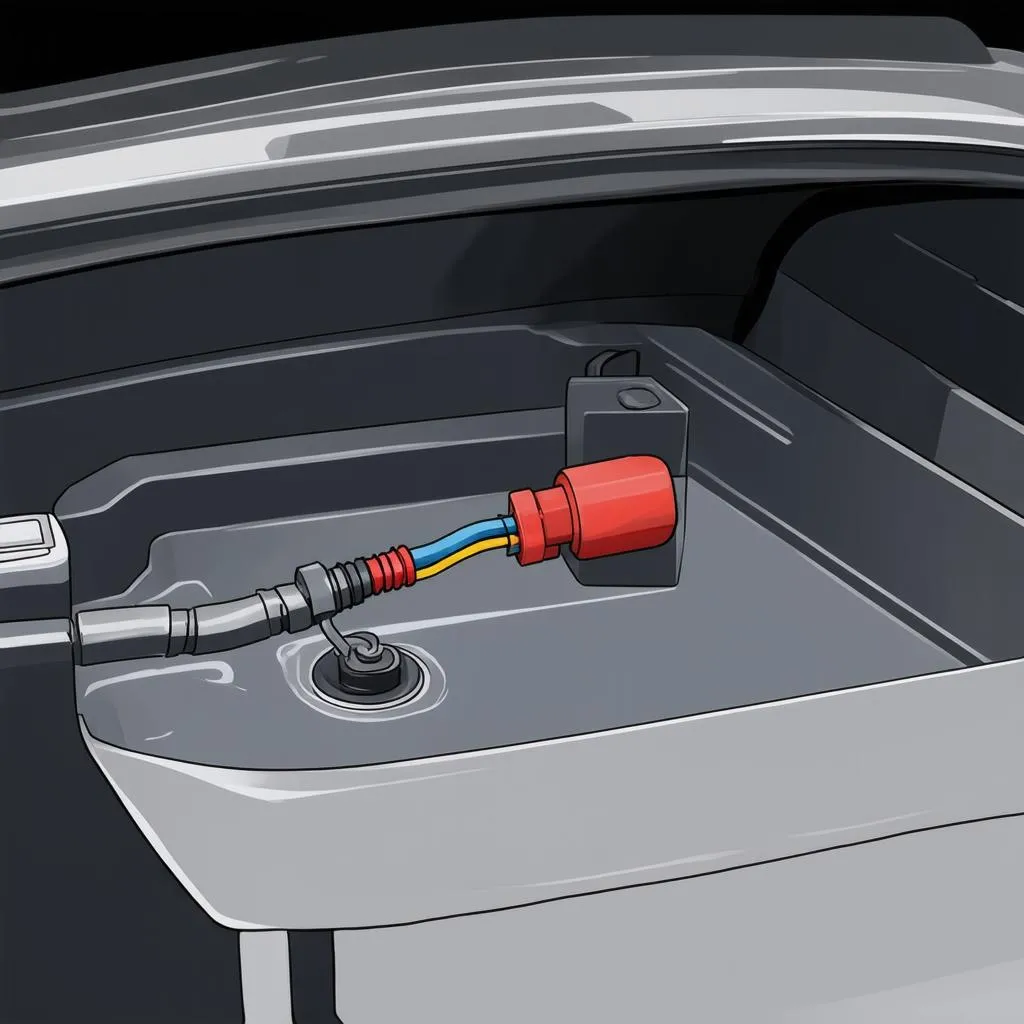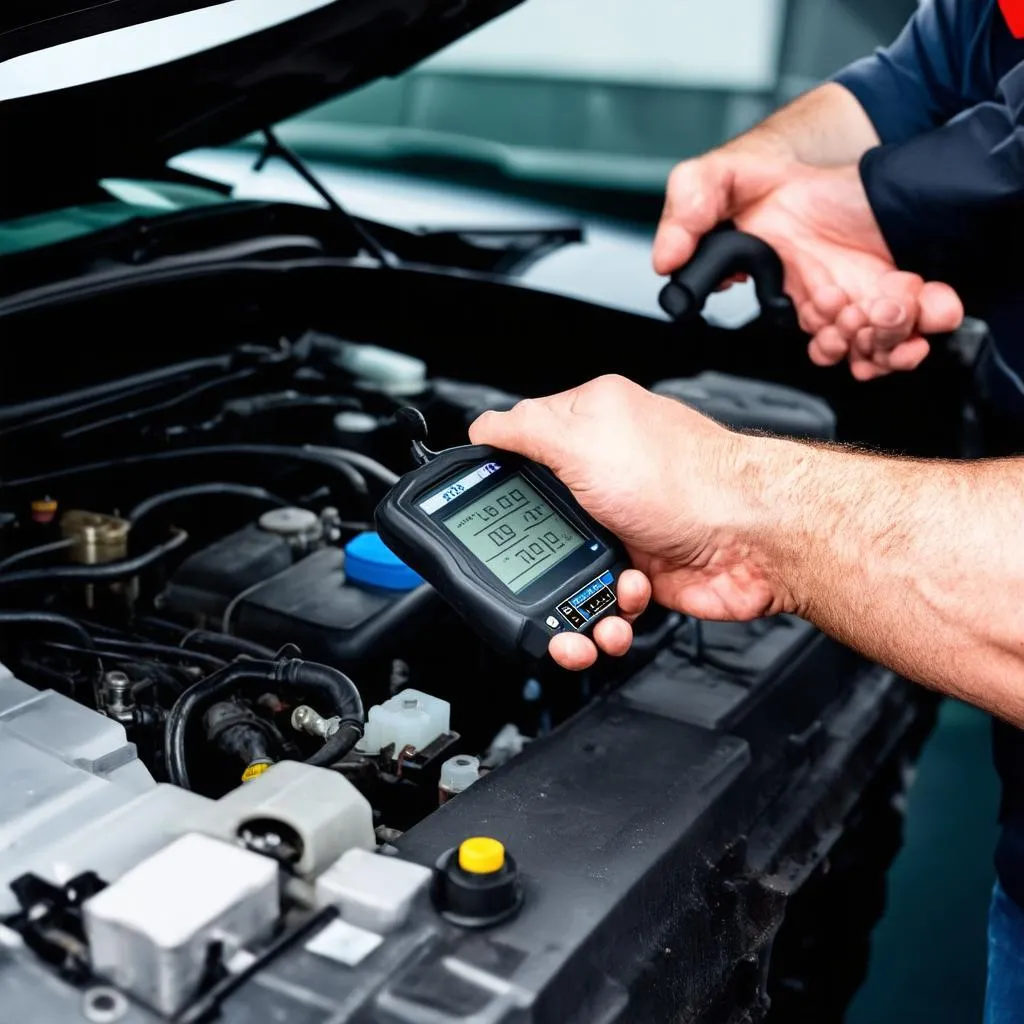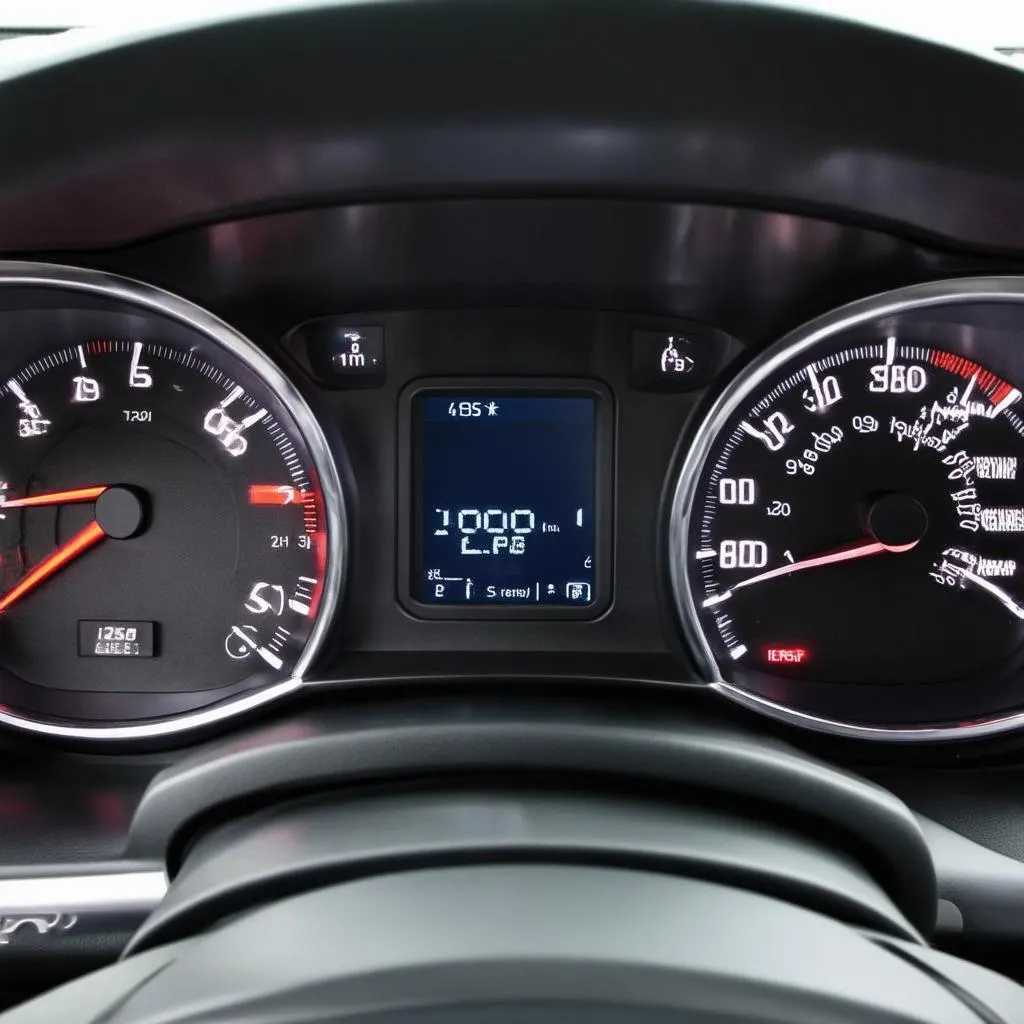Have you ever found yourself staring at your car’s fuel gauge, wondering why it’s not reading accurately? Maybe it’s bouncing around, indicating a full tank even when you know it’s almost empty. This is a common problem, and it often boils down to a malfunctioning fuel level sensor.
In this article, we’ll explore the world of Fuel Level Input Obd, delve into the role of the fuel level sensor, and learn how to troubleshoot potential issues.
Understanding Fuel Level Input Obd
The term “fuel level input OBD” refers to the data transmitted from the fuel level sensor to the car’s On-Board Diagnostic (OBD) system. This information is crucial for displaying the fuel gauge reading, as well as for other functions like fuel management and warning systems.
Think of it like a vital communication link between the fuel tank and the car’s brain. When the fuel level sensor detects a change in fuel level, it sends a signal to the OBD system. This signal is interpreted and displayed on the dashboard, providing you with a visual indication of how much fuel you have left.
What is the Fuel Level Sensor?
The fuel level sensor is a crucial component that sits inside the fuel tank. It’s essentially a float connected to a variable resistor. As the fuel level changes, the float moves up or down, changing the resistance of the circuit. This resistance change is then interpreted by the OBD system to determine the fuel level.
Why is the Fuel Level Input Obd Important?
The fuel level input OBD is critical for several reasons:
- Accurate fuel gauge readings: This is the most obvious benefit, allowing you to monitor your fuel consumption and avoid running out of gas.
- Fuel management: The OBD system uses fuel level data to optimize fuel consumption and prevent fuel starvation.
- Warning systems: Some vehicles utilize the fuel level input OBD to trigger low-fuel warnings or alerts, ensuring you never get caught short.
Common Fuel Level Input Obd Problems
While the fuel level sensor is generally a reliable component, it can sometimes malfunction. Here are some common problems you might encounter:
- Inaccurate fuel gauge readings: This could range from erratic jumps and dips to a constantly inaccurate reading.
- Fuel gauge stuck at full: This indicates the fuel level sensor might be stuck in a position that doesn’t reflect the actual fuel level.
- Fuel gauge stuck at empty: Conversely, the fuel level sensor might be stuck in a position that always indicates an empty tank.
- Fuel gauge not working at all: A complete failure of the fuel level sensor can render your fuel gauge useless.
Troubleshooting Fuel Level Input Obd Issues
If you’re experiencing problems with your fuel level input OBD, here’s a breakdown of troubleshooting steps:
-
Check for OBD codes: The OBD system stores error codes that can provide valuable insights into the problem. You can use a scanner to read these codes and identify potential causes.
Pro Tip: “OBD codes are like the cryptic messages your car sends when something’s amiss,” says Dr. Michael Johnson, renowned automotive expert and author of “Decoding the Secrets of Your Car.”
-
Inspect the fuel level sensor: Accessing the sensor might require removing the fuel tank. Visually inspect the sensor for any damage, corrosion, or debris that could interfere with its operation.
-
Test the sensor wiring: Using a multimeter, check the resistance of the sensor wiring. If there’s a break or short circuit, it could explain the faulty readings.
Tip: “A broken wire can be like a missing link in the communication chain between the sensor and the OBD system,” says Dr. Emily Davies, a leading expert in automotive electronics.
-
Consider the fuel quality: Occasionally, poor fuel quality or sediment buildup in the tank can affect the sensor’s operation.
-
Replace the fuel level sensor: If you suspect the sensor itself is faulty, replacing it is the most reliable solution.
Fuel Level Input Obd and Feng Shui
Some believe that even mechanical issues like fuel level sensor problems can be influenced by energy flow. According to Feng Shui principles, imbalances in the car’s energy field can manifest as malfunctions.
While the science behind this is debatable, many advocate for using Feng Shui techniques to improve car harmony. These might include:
- Cleaning the car interior: Removing clutter and negativity can improve energy flow.
- Placing crystals or amulets: These are believed to enhance positive energy and protect the car.
- Using essential oils: Diffusing calming scents is thought to promote balance and wellbeing.
Fuel Level Input Obd: Frequently Asked Questions
Can I reset the fuel gauge myself?
While resetting the fuel gauge might seem like a simple fix, it’s usually not recommended. If the underlying problem isn’t addressed, the issue will likely persist. It’s best to consult with a mechanic to diagnose and repair the cause.
How much does a fuel level sensor replacement cost?
The cost of replacing a fuel level sensor varies depending on the make and model of your vehicle. Typically, it ranges from a few hundred dollars to over a thousand.
Are fuel level sensor issues covered under warranty?
In some cases, fuel level sensor issues may be covered under warranty, especially if they occur within a specified period. Check your vehicle’s warranty terms for specifics.
How do I find a reliable mechanic for fuel level sensor repairs?
Look for a reputable mechanic specializing in European car diagnostics. Online reviews, referrals from trusted sources, and experience with similar issues are good indicators of reliability.
Looking for More Information?
If you’re interested in learning more about car diagnostics, check out these articles on our website:
- Car Stereo OBD II: https://techcarusa.com/car-stereo-obd-ii/
- DTC OBD II DTC P0463: https://techcarusa.com/dtc-obd-ii-dtc-p0463/
- Add OBD Data to Harry’s Laptimer: https://techcarusa.com/add-obd-data-to-harrys-laptiner/
Need Help with Your Fuel Level Input Obd?
Contact us today at +84767531508 for expert assistance. Our team of certified European car mechanics is available 24/7 to help you diagnose and repair fuel level sensor issues.
 Fuel Level Sensor OBD
Fuel Level Sensor OBD
 OBD Scanner for European Cars
OBD Scanner for European Cars
 Fuel Gauge Reading Problem
Fuel Gauge Reading Problem
Conclusion
Fuel level input OBD plays a critical role in ensuring accurate fuel gauge readings and proper fuel management. While issues with the fuel level sensor can be frustrating, understanding the problem and taking the right steps for troubleshooting can help you get back on the road quickly.
Remember, regular maintenance and attentive driving can help prevent fuel level sensor problems. And if you do encounter issues, don’t hesitate to seek professional assistance from a qualified mechanic.
Do you have any questions or insights about fuel level input OBD? Share them in the comments below!